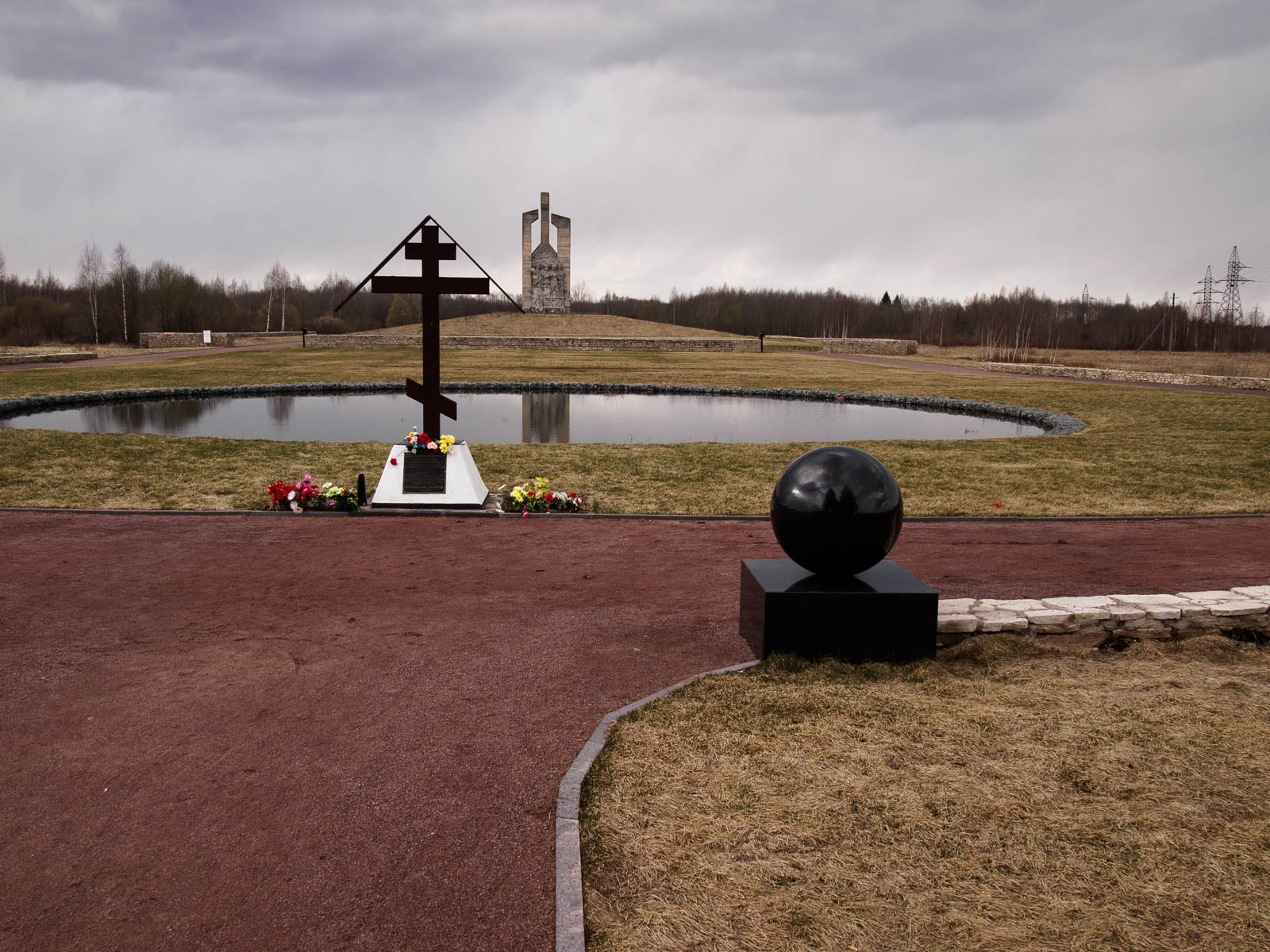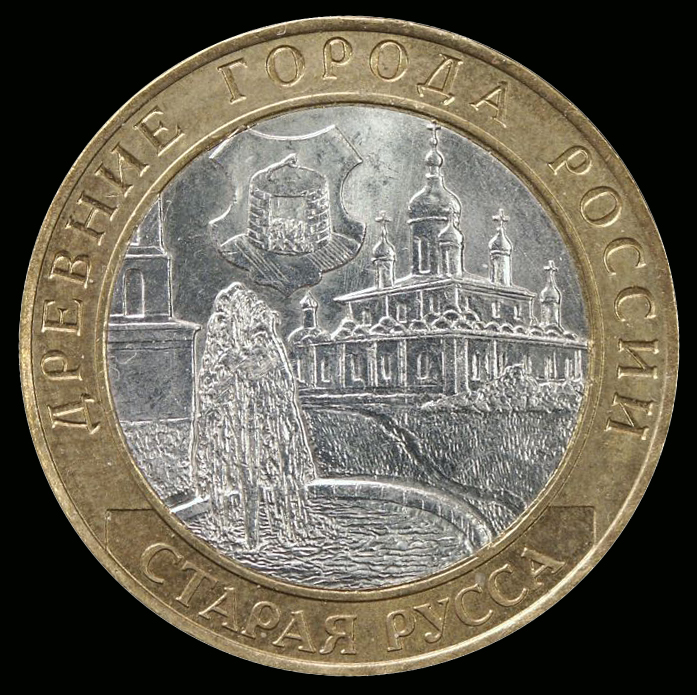|
Dno
Dno (russian: Дно) is a town and the administrative center of Dnovsky District in Pskov Oblast, Russia, located at the intersection of the Pskov–Bologoye and St. Petersburg–Vitebsk railways, east of Pskov, the administrative center of the oblast. Population: History Founded as a railway center in 1897, it was granted town status in 1925. The territory used to be a part of Porkhovsky Uyezd of Pskov Governorate, and Dno was the seat of Dnovskaya Volost. On August 1, 1927, the uyezds and governorates were abolished and Dnovsky District, with the administrative center in Dno, was established as a part of Pskov Okrug of Leningrad Oblast.''Administrative-Territorial Structure of Pskov Oblast'', pp. 11–12 It included parts of former Porkhovsky Uyezd. On July 23, 1930, the okrugs were also abolished and the districts were directly subordinated to the oblast. During World War II, Dno was under German occupation from 18 July 1941 until 24 February 1944 ... [...More Info...] [...Related Items...] OR: [Wikipedia] [Google] [Baidu] |
Dno Station Asv2018-07 Img1
Dno (russian: Дно) is a town and the administrative center of Dnovsky District in Pskov Oblast, Russia, located at the intersection of the Pskov–Bologoye and St. Petersburg–Vitebsk railways, east of Pskov, the administrative center of the oblast. Population: History Founded as a railway center in 1897, it was granted town status in 1925. The territory used to be a part of Porkhovsky Uyezd of Pskov Governorate, and Dno was the seat of Dnovskaya Volost. On August 1, 1927, the uyezds and governorates were abolished and Dnovsky District, with the administrative center in Dno, was established as a part of Pskov Okrug of Leningrad Oblast.''Administrative-Territorial Structure of Pskov Oblast'', pp. 11–12 It included parts of former Porkhovsky Uyezd. On July 23, 1930, the okrugs were also abolished and the districts were directly subordinated to the oblast. During World War II, Dno was under German occupation from 18 July 1941 until 24 February 1944. ... [...More Info...] [...Related Items...] OR: [Wikipedia] [Google] [Baidu] |
Dnovskaya Volost
Dnovsky District (russian: Дно́вский райо́н) is an administrativeLaw #833-oz and municipalLaw #420-oz district (raion), one of the twenty-four in Pskov Oblast, Russia. It is located in the east of the oblast and borders with Soletsky District of Novgorod Oblast in the northeast, Volotovsky District, also of Novgorod Oblast, in the east, Dedovichsky District in the south, and with Porkhovsky District in the west. The area of the district is . Its administrative center is the town of Dno. Population: 16,048 ( 2002 Census); The population of Dno accounts for 67.9% of the district's total population. Geography Being a part of the Ilmen Depression, the district's landscape is essentially flat. The district lies in the basin of the Shelon River. The biggest rivers in the district, all of them being right tributaries of the Shelon, are the Dubyanka, the Polonka, and the Lyuta. A part of the Shelon itself flows through the district as well. History In the past, the ar ... [...More Info...] [...Related Items...] OR: [Wikipedia] [Google] [Baidu] |
Dno (air Base)
Dno (russian: аэродром Гривочки), also known as Grivochki (Гривочки), was a military air base in Dnovsky District, Pskov Oblast, Russia. It was located south of Dno, approximately east of Pskov, and of the Estonian border. Dno air base was established by the Soviet Union prior to World War II, to serve the Soviet Air Force, with the 7th Air Army operating from there during the Winter War from 1939 to 1940. In 1941, Dno was captured by Nazi Germany during Operation Barbarossa and given the German name ''Flugplatz Griwotschki'' (Grivochki Airfield), who renovated and expanded it for use by the ''Luftwaffe''. On March 15, 1943, the air base was raided by the Soviet 202nd High-speed Bomber Aviation Regiment, reportedly destroying 20 German planes and permanently crippling German air activity in the area. In 1944, Grivochki was destroyed by retreating Wehrmacht The ''Wehrmacht'' (, ) were the unified armed forces of Nazi Germany from 1935 to 1945. It ... [...More Info...] [...Related Items...] OR: [Wikipedia] [Google] [Baidu] |
Pskov Oblast
Pskov Oblast (russian: Пско́вская о́бласть, ') is a federal subject of Russia (an oblast), located in the west of the country. Its administrative center is the city of Pskov. As of the 2010 Census, its population was 673,423. Geography Pskov Oblast is the westernmost federal subject of contiguous Russia ( Kaliningrad Oblast, while located further to the west, is an exclave).1september.ru. Д. В. Заяц (D. V. Zayats).Псковская область (''Pskov Oblast''). It borders with Leningrad Oblast in the north, Novgorod Oblast in the east, Tver and Smolensk Oblasts in the southeast, Vitebsk Oblast of Belarus in the south, and with the counties of Latvia ( Alūksne Municipality, Balvi Municipality, and Ludza Municipality) and Estonia ( Võru County) in the west. In the northwest, Pskov Oblast is limited by Lake Peipus, which makes up most of the state border with Estonia. The oblast is located in the Baltic Sea drainage basin, mostly in ... [...More Info...] [...Related Items...] OR: [Wikipedia] [Google] [Baidu] |
Dedovichi
Dedovichi (russian: Дедовичи) is an urban locality (a work settlement) and the administrative center of Dedovichsky District of Pskov Oblast, Russia, located on the Shelon River east of Pskov. Municipally, it is incorporated as Dedovichi Urban Settlement, the only urban settlement in the district. Population: History Whereas the area was populated from the 11th century, and an archeological site existing in Dedovichi shows that a fortress was located there in medieval times, the settlement of Dedovichi was founded in 1901 to serve a railway station, one of the five built on the stretch between Dno and Novosokolniki on the railway connecting Saint Petersburg and Kiev. At the time, Dedovichi was part of Porkhovsky Uyezd of Pskov Governorate. On August 1, 1927, the uyezds were abolished, and Dedovichsky District was established, with the administrative center in Dedovichi. The governorates were abolished as well, and the district became a part of Pskov Okrug of Le ... [...More Info...] [...Related Items...] OR: [Wikipedia] [Google] [Baidu] |
Leningrad Oblast
Leningrad Oblast ( rus, Ленинградская область, Leningradskaya oblast’, lʲɪnʲɪnˈgratskəjə ˈobləsʲtʲ, , ) is a federal subject of Russia (an oblast). It was established on 1 August 1927, although it was not until 1946 that the oblast's borders had been mostly settled in their present position. The oblast was named after the city of Leningrad. In 1991, the city restored its original name, Saint Petersburg, but the oblast retains the name of Leningrad. The capital and largest city is Gatchina. The oblast overlaps the historic region of Ingria and is bordered by Finland ( Kymenlaakso and South Karelia) in the northwest and Estonia (Ida-Viru County) in the west, as well as five federal subjects of Russia: the Republic of Karelia in the northeast, Vologda Oblast in the east, Novgorod Oblast in the south, Pskov Oblast in the southwest, and the federal city of Saint Petersburg in the west. The first governor of Leningrad Oblast was Vadim Gustov (in ... [...More Info...] [...Related Items...] OR: [Wikipedia] [Google] [Baidu] |
Soltsy
Soltsy (russian: Сольцы́) is a town and the administrative center of Soletsky District in Novgorod Oblast, Russia, located on the left bank of the Shelon River, southwest of Veliky Novgorod, the administrative center of the oblast. Population: History Soltsy, whose name owes to the nearby salt water springs, was first mentioned in a chronicle in 1390 and in the following played an important role as an intermediate station on the trade route connecting Novgorod and Pskov. In 1471, the Battle of Shelon between Muscovite forces led by Ivan III and the army of the Novgorod Republic took place near Soltsy, which marked the end of political independence of the Novgorod Republic. Soltsy eventually became a part of the Moscow State. In the course of the administrative reform carried out in 1708 by Peter the Great, the territory was included into Ingermanland Governorate (known since 1710 as Saint Petersburg Governorate). In 1727, separate Novgorod Governorate was split o ... [...More Info...] [...Related Items...] OR: [Wikipedia] [Google] [Baidu] |
Cities And Towns In Pskov Oblast
A city is a human settlement of notable size.Goodall, B. (1987) ''The Penguin Dictionary of Human Geography''. London: Penguin.Kuper, A. and Kuper, J., eds (1996) ''The Social Science Encyclopedia''. 2nd edition. London: Routledge. It can be defined as a permanent and densely settled place with administratively defined boundaries whose members work primarily on non-agricultural tasks. Cities generally have extensive systems for housing, transportation, sanitation, utilities, land use, production of goods, and communication. Their density facilitates interaction between people, government organisations and businesses, sometimes benefiting different parties in the process, such as improving efficiency of goods and service distribution. Historically, city-dwellers have been a small proportion of humanity overall, but following two centuries of unprecedented and rapid urbanization, more than half of the world population now lives in cities, which has had profound consequences for g ... [...More Info...] [...Related Items...] OR: [Wikipedia] [Google] [Baidu] |
Revolution Of 1905
The Russian Revolution of 1905,. also known as the First Russian Revolution,. occurred on 22 January 1905, and was a wave of mass political and social unrest that spread through vast areas of the Russian Empire. The mass unrest was directed against the Tsar, nobility, and ruling class. It included worker strike action, strikes, peasant unrest, and military mutiny, mutinies. In response to the public pressure, Nicholas II of Russia, Tsar Nicholas II enacted some constitutional reform (namely the October Manifesto). This took the form of establishing the State Duma (Russian Empire), State Duma, the multi-party system, and the Russian Constitution of 1906. Despite popular participation in the Duma, the parliament was unable to issue laws of its own, and frequently came into conflict with Nicholas. Its power was limited and Nicholas continued to hold the ruling authority. Furthermore, he could dissolve the Duma, which he often did. The 1905 revolution was primarily spurred by the inte ... [...More Info...] [...Related Items...] OR: [Wikipedia] [Google] [Baidu] |
Porkhov
Porkhov (russian: По́рхов) is a town and the administrative center of Porkhovsky District in Pskov Oblast, Russia, located on the Shelon River, east of Pskov, the administrative center of the oblast. Population: History The fortress of Porkhov is believed to have been founded in 1239 by Alexander Nevsky. The timber fortress was sacked by Algirdas (Olgierd) in 1356 and fell in flames in 1387. The Novgorod Republic immediately rebuilt its fortifications in limestone downstream. In 1428, Grand Duke of Lithuania Vytautas destroyed the western wall by artillery fire and entered Porkhov. Two years later, the Novgorodians augmented the fortress and rebuilt its walls. After the fall of Novgorod to the Muscovites in 1478, the fortress lost its military importance. Porkhov was the second most important town of Shelon Pyatina, after Russa. It was not, however, a significant economical center—there were only seventy-six homesteads there in the 15th century and almost al ... [...More Info...] [...Related Items...] OR: [Wikipedia] [Google] [Baidu] |
Staraya Russa
Staraya Russa ( rus, Старая Русса, p=ˈstarəjə ˈrusːə) is a town in Novgorod Oblast, Russia, located on the Polist River, south of Veliky Novgorod, the administrative center of the oblast. Its population has steadily decreased over the past years, going from 41,538 recorded in the 1989 Census to 35,511 in the 2002 Census to 31,809 in the 2010 Census. Etymology The origin of the name of Staraya Russa is unclear. The most involved and widespread hypothesis was presented by philologists and linguists R. A. Akheyeva, V. L. Vasilyev, and M.V. Gorbanevsky. According to this hypothesis, ''Russa'' comes from Rus'—a Slavic people, who settled in the vicinity to control trade routes leading from Novgorod to Polotsk and Kiev—which, in turn, is usually thought to originate from an Old Norse term for "the men who row" (''rods-'') as rowing was the main method of navigating the rivers of Eastern Europe, and that it could be linked to the Swedish coastal ... [...More Info...] [...Related Items...] OR: [Wikipedia] [Google] [Baidu] |





